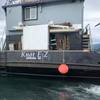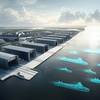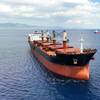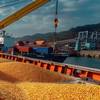Ben van Scherpenzeel is Chairman of the international Port Call Optimisation Task Force said that it’s rather curious that the shipping sector, whose history goes back some 5,000 years, only recently adopted international standards for nautical port information.
Numerous younger industries, including aviation and telephony, set up international standards a long time ago.
The task force works to improve the quality of information in the port call process by identifying data bottlenecks, embracing existing industry standards for these data and subsequently testing these standards with the aid of prototypes (i.e. not with commercial products).
"But then shipping does involve a huge number of parties across the planet. For a long time, the individual sea ports as well as other players throughout the sector all lived on their own islands. For example, both the container and tanker shipping sectors use their own distinct jargon," he further said.
Ben van Scherpenzeel explained the following points: -
Today’s shipping sector is faced with huge challenges: margins on assets are growing slimmer and the industry is required to cut its CO2 emissions. The more efficiently you can use your vessels, the lower your operational costs and emissions become. And international standards for Port Call Optimisation can help in this context.
Major shippers and shipping companies will literally ‘fare well’ thanks to this development. Every day, they dispatch hundreds of vessels within a network of hundreds of ports. In the past, these parties didn’t have a uniform vocabulary to discuss matters like water depth and arrival and departure times. This lack of standard terminology led to delays during port calls and sub-optimal capacity utilisation. Try managing a large fleet efficiently under those circumstances.
That is why a variety of global market parties, like Shell, Maersk, MSC and CMA-CGM, as well as ports from Gothenburg, Singapore, Houston and Busan to Ningbo-Zhoushan and Algeciras became involved in the international Port Call Optimisation Task Force, in which the private sector, ports and interest groups work together on the formulation of international standards.
This has been a time-consuming, complex programme, since it involved gathering parties around the table that in some cases had never even met before. The first Call to Action was issued as far back as 2006. For a long time, participants sought to determine the most effective technical approach and establish which information at the very least needed to be standardised. As a point of departure, the Task Force adopted a single business process for both tanker and container shipping.
Last year, the partners published a number of functional definitions: which uniform terms will we be using from now on to communicate matters like depth or ETA? They decided on terminology that is already used in logbooks and on international sea charts. The data definitions for the transfer of information will be published in late May 2018. It is subsequently up to the maritime sector to adhere to and maintain these data and functional definitions, so that 50 years from now, we’ll still all be on the same page.
Shipping is a global industry. Standardisation only makes sense if all information owners within the business process share their data. The Port of Rotterdam Authority recently launched Pronto, the first communication platform based on the new standards. The accelerated worldwide roll-out of technology of this kind will contribute to the swift development of clean and efficient shipping. In this context, it is important to get every party that provides services to sea-going vessels on board. From terminals to pilots, and from bunkering companies to victuallers.
In fact: do we even have a choice, in social and economic terms? The answer is no. Standardised communication is a basic condition for a future-proof shipping sector, which needs to become cleaner and more efficient. By 2030, CO2 emissions have to be reduced by 50% compared to the levels recorded in 2008. When it comes to cutting back our emissions, we can achieve the best result by facilitating just-in-time arrivals. Which also strengthens the sector’s economic impact, incidentally.
It all starts with the exchange of information – including among the sea-going vessels themselves. My advice to the shipping sector: proceed from here as a cluster. In the end, sea-going vessels all call on the same group of ports. They can hinder each other during arrival and departure. And ports in turn are advised to take a less fragmented approach. As a port, you are merely a single node in your clients’ vast network of connections. Leaving the standardisation aside, this new mind-set can also contribute to the accelerated roll-out of cleaner shipping operations.'











